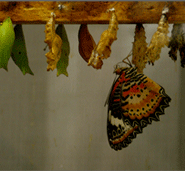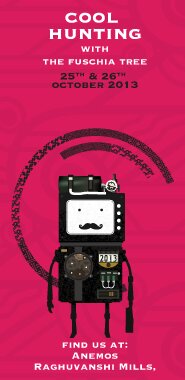Second row from the stage – I felt smug in my seat of privileged view. It wasn't going to be the usual evening of taking a test for hypermetropia or digging out wax from my ears. I would have a crystal clear vision of the dilating of the eyes of the actor-lovers as they cast amorous glances towards each other. The lights dimmed, the curtains parted and I was ferried to a realm where I had a corps a corps relationship with the players. 'There's nothing to surpass the magic of live theatre and the communion it creates among performers and spectators', I applauded, in admiration of the form.
A week later, I chanced upon some photographs of the same performance on the internet. They were “still” pictures, not only in the sense of “motionless” and “mute” but “remaining”. I thought I had absorbed each little twitch of the actors' muscles but these photographs seemed to speak to me of still more. I looked at the pictures longer than I had sat in the darkened hall, rediscovering the future of a performance past.
Thinking, as we do often, through the frame of linear temporality within the live/ still binary, photographs and performance seem to be at odds with each other. However, if we rejected the idea of hierarchies in viewing experiences, we would experience the transcendental, imaginative participation photography calls upon us. Reconstructing from embers of memory or creating anew notes, movements and expressions – Photography lends plurality to the meaning of Performance.
The serene ecstasy of a greenroom rehearsal; the body warm from the act of kicking up one's heels in psychedelic light; the frigidity of the corporate slave under surveillance of his skull-head administrator; the poise of a dancer subsumed in the shadow of her own body – are no footnote to a live event but an alternate meaning creation process.
Raghav Pasricha's exploration of performance through photography strikes the nuanced note in a voice that retains the ruggedness of everyday wear and tear. His frames don't attempt to obliterate the stray hand of an audience member holding up a handycam, the grainy quality of ill lit stages, awkward camera angles or stray wires peeping from the wings. In his rejection of a postcard image, Pasricha gathers the elements that 'animate' the image- the onlookers in various states of expression, a plate of cookies, plastic bottles in the greenroom, the backs of people's heads, mere outlines of the rock musicians instead of a front row view, the abhinaya of the dancer lost in shadow. He conveys his experience of the performance in its lived inadequacies. In the lived-ness is the live-ness of the picture,. Pasricha performs in tandem with the artist he photographs – creating conversations between photography and performance. His photographs transmit the disembodied power of the performance through time.
In Untitled 1, the musicians are entrenched in harmonizing their pitches and rhythms before a recital. They are oblivious to the presence of an incidental audience that includes a still and a video camera. The picture is detailed with the strings of the tanpura gently plucked against a monotonous whirring of the table fan, the nimble notes of the tabla against the whispers of organizing committee, the bold tune of the harmonium and the husky voice of the Hindustani Classical vocalist against the clinking of the tea cup. Counterpoints and leitmotifs are melodiously imbued in this picture. The photographer captures the music in a still- through a vivacious intimacy with the performer and thus her art.
Pasricha recreates the communion between the performer and the audience in a ritualistic sharing of space. The performer is never made to appear like a larger-than-life, reverential figure. She shares a smile with a co-musician (Untitled 1), is daunted by her own shadow (Untitled 4), is not presented with an aura of stardom (Untitled 3) – the performer's art and expression is at par with the experience of and meaning that the spectator construes. Through his photographs of performances, Raghav Pasricha, undoes a linear logic. He creates an egalitarian dialogue between the animate and the inanimate. The performance is not understood as preceding the photograph – time is, all at once, live, catapulting, slipping from one's hands, ebbing, beaten, creating a continuum, dragging and still.
By Manjari Kaul, a writer living in Delhi.
Editor's Note.
How do we remember? Not with calendars or clocks. Certainly not with the eponymous temporal lobe.
We remember by looking at old photographs, their wear and tear telling time. We remember in a grandfather's waist belt that we no longer know how to wear or by the taste of fake sugar cigarettes that we couldn't smoke. We remember by tasting a spice used in biryani or by feeling the wee corners of our ears turn icy cold.
Read MoreWe remember by looking at old photographs, their wear and tear telling time. We remember in a grandfather's waist belt that we no longer know how to wear or by the taste of fake sugar cigarettes that we couldn't smoke. We remember by tasting a spice used in biryani or by feeling the wee corners of our ears turn icy cold.
Also in this issue
Illusion: Seeing Beyond Seeing
Meaning: In Search of Significance.
Melody: A Different Tune
Rhythm: Ordering Time









